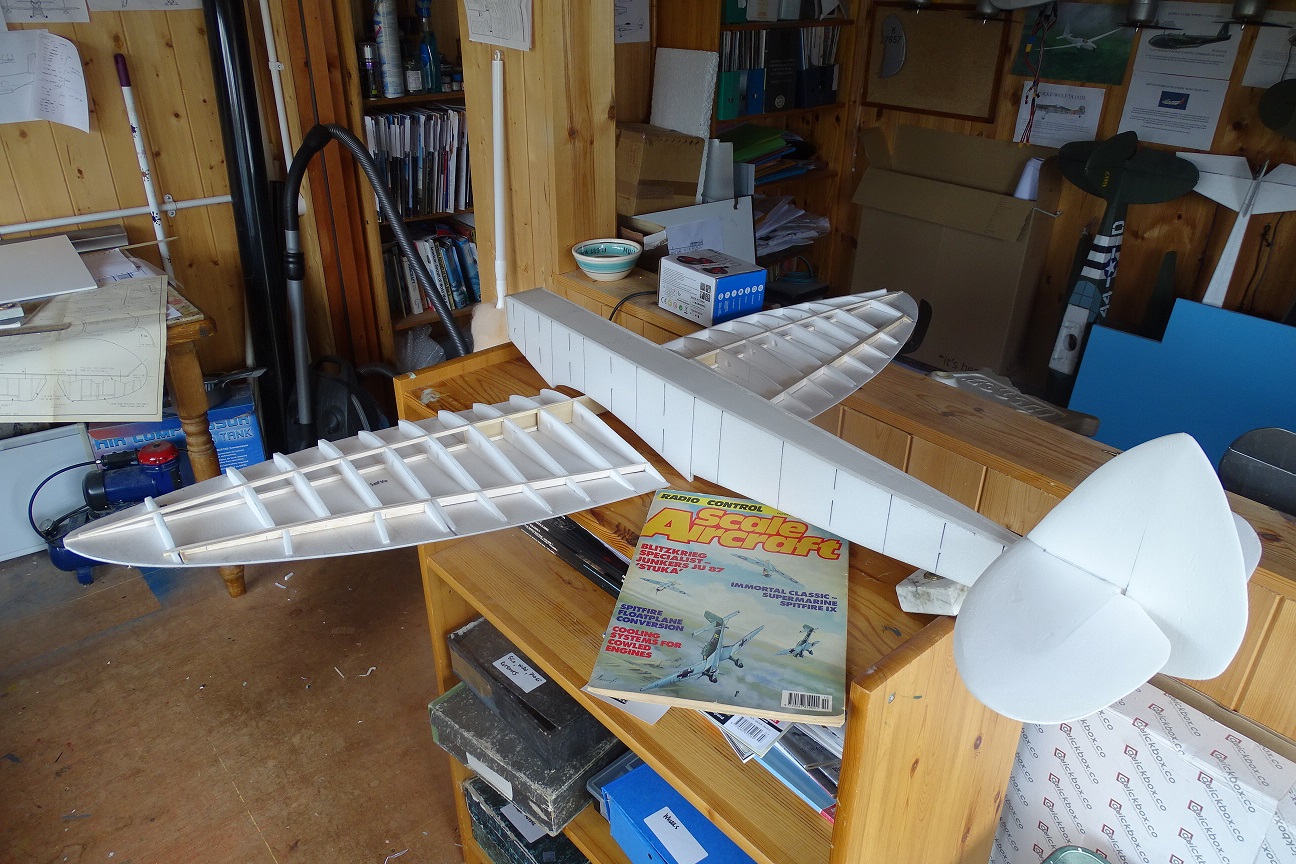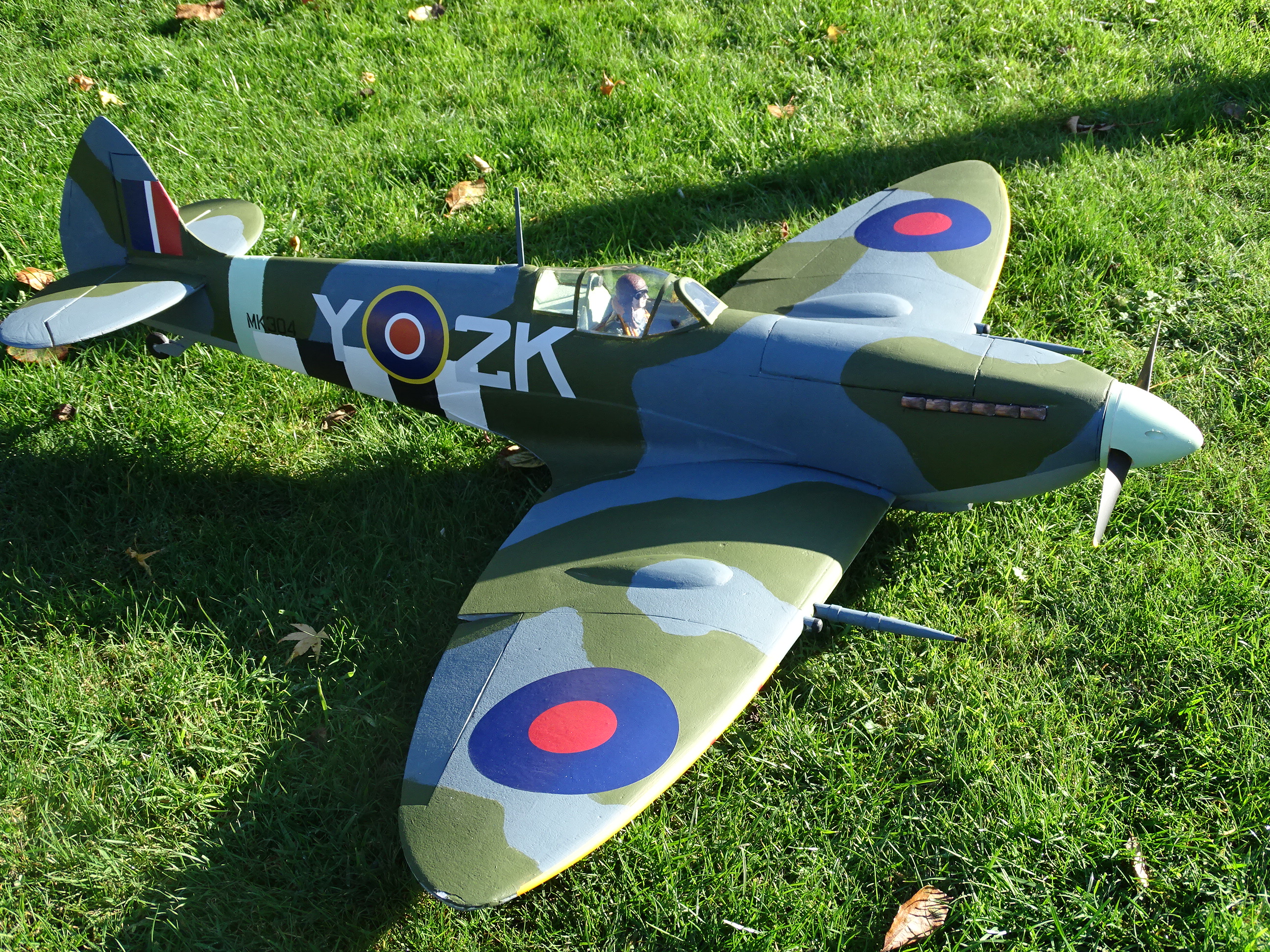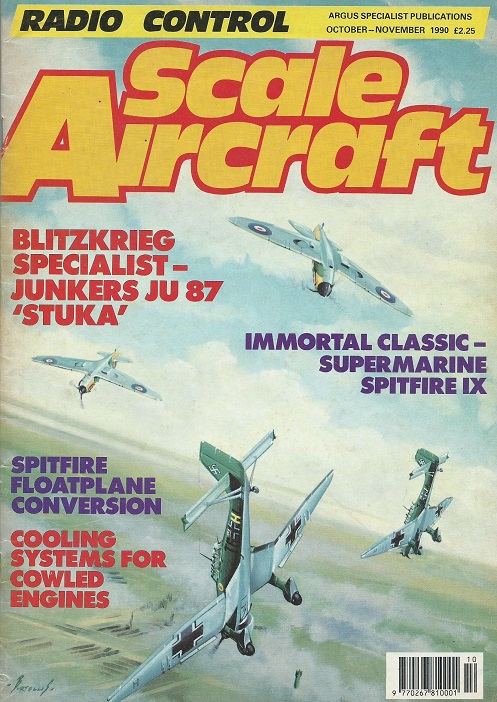|
Just a few lines on converting a 20-year old Spitfire designed for .40 power to a much lighter Depron version for Park 450.
I was flying my recently completed D Rock Hurricane when someone challenged me - when was I going to build a Spitfire? I was not, but by coincidence was looking through some old magazines and came across that master of airbrushing overkill, Ian Peacock's 48" span Spitfire MkIX. This was the free plan in the Oct/Nov RCSA from 1990 when David Boddington was editor in a golden age of modelling magazines. The same evening I saw on RC Groups eflightray's 72" depron version of the Spitfire...and just knew what I had to do!
Construction follows Ray's advice and my own methods and results in a strong airframe (but I admit, one very subject to rash). The fuselage box is simply built from 6mm sheet with rectangular formers, designed to be just within the scale section outlines. The outlines are then added and finally clothed in 3mm sheet to make a decent representation of the graceful and familiar Spitfire shape. This technique will of course work for almost any stressed-skin prototype. Tissue covering to add some ding-resistance is optional.

The tail feathers were made up from two laminations of 6mm sheet, then heavily sanded to approximately scale sections. The rudder is fixed, so it is a "yank and bank" flier.
The wing is built on the lower 3mm surface with hard 3mm sq balsa spars. I used the E207 airfoil which was very similar to Ian's foam veneered original but put a small servo in each wing rather than the torque rod system he used. Before adding the top skin I added the washout Ian specified.
The motor is a Park 450 with a 40A SC and 11 x 6 prop and the battery is a 2200 3-cell, which balances the model without needing any ballast.
Ian's was a hand-launched plane, and so is mine. I added a scale slipper tank under the centre section to act as a hand-grip, take the arrival loads and keep the radiators, cannon and aileron pushrods out of the grass. Not sure how successful that will be.
The obvious candidate for markings was the Canadian restoration "Y2K" which I saw in half-finished state back in 2010 at Comox, Vancouver Island while on a visit to my good friend Frank "von" Jaerschky. He got TrevorH and me into the hangar where it was being worked on and I was allowed to take some pictures. What a privilege. I sent the details to Callie and 10 days later the markings arrived in my postbox. She even got the strange typography of the codes and serial number correct. Paint was Dulux matt mixed to the RAL shades by Homebase in Christchurch and rollered on. I have full details if anyone would like them.

The model weighs a hair over 2lbs RTF and has not yet flown. The weather is a problem at the moment, but also I nearly took the top of my thumb off in a Princess Propeller incident two weeks ago. The stitches are out now but I feel a little nervous!
Mike Roach
|


